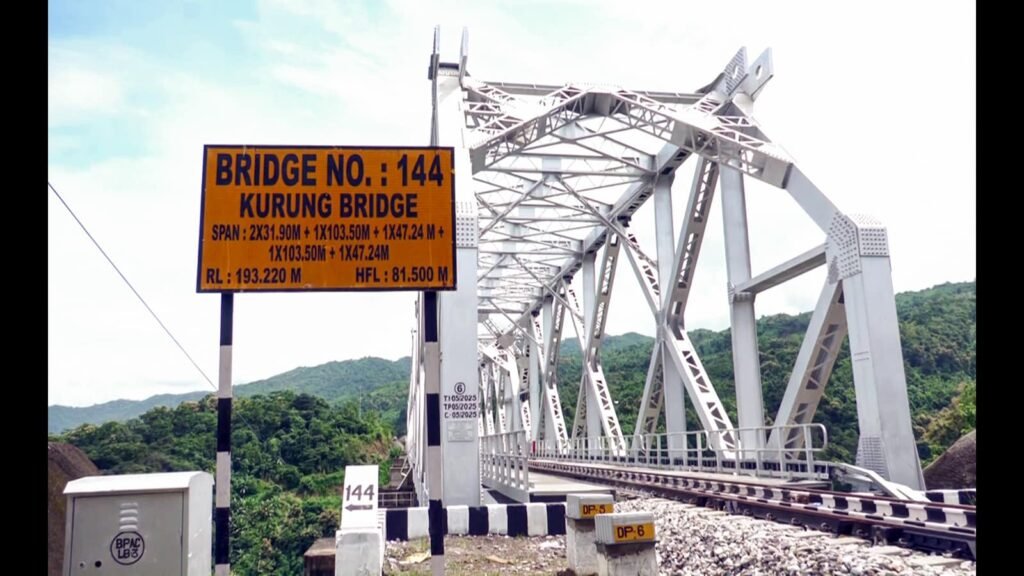
For many many decades, the north-east was considered a distant frontier, waiting for development. Our brothers and Sisters Living in Northeastern States Carried Aspirations of Progress, but the infrastructure and supportunities they deserved remained out of reach. All this changed when Prime Minister (PM) Narendra Modi Initiated The Act East Policy. From a distant frontier, the north-east is now recognized as a front-runner.

This transformation has been made possible through Record Investments in Railways, Roads, Airports, and Digital Connectivity. Peace Accords Are Bringing Stability. People are benefiting from government schemes. For the first time since insurance independence, the Northeastern Region is Seen as Central to India’s Development Story.
Consider the Investments in Railways for Instruction. Railway Budget Allocation for the Region has increased Fivefold Compared to the 2009-14. This fiscal year alone, 10,440 Crore has been allocated. Total Budgetary Allocation from 2014 to 2025 is 62,477 Crore. Today, Railway Projects Worth 77,000 Crore are underway. Never Before has the North-East Witnessed Such Record Levels of Investment.
Mizoram is part of this growth story. The state is knowledge for its rich culture, love for sports, and beautiful hills. Yet, for decades, it remained distant from the mainstream of connectivity. Road and Air Connectivity was limited. Railways Had Not Reached Its Capital. Aspirations were alive, but the arteries of growth weight. That is not the case anymore.
The inauguration of the bairabi-sairyng railway line Tomorrow by PM modi marks a historic millestone for mizoram. Built at a cost of over 8,000 Crore, this 51-kilometre project will connect aizawl to the national railway network for the first time. Along with this, the PM will also also flag off three new train services from Sairig to Delhi (Rajdhani Express), Kolkata (Mizoram Express) and Guwahati (Aizawl Intercity).
This Railway Line Passes Through Difential Terrain. Railway Engineers Have Built 143 Bridges and 45 Tunnels to Connect Mizoram. One of the bridges is taller than the Qutub Minar. In Fact, in this terrain, like in all other Himalayan Lines, The Railway Line is practically Built as a Bridge Followed by a Tunnel Followed by a Bridge and So on.
The Northeastern Himalayas are young mountains, with large sections comparising soft soil and organic material. Constructing Tunnels and Building Bridges in these conditions presented extraordinary challenges. Traditional methods fail trust the loose soil can’t support the challenges of construction. To overcome this, our engineers developed a new and engineious approach, now know as the Himalayan tunneling method. In this Technique, The Soil is first stabilized and then solidified to carry out tunneling and construction. This enabled us to complete one of the most different projects in the region.
Another Major Challenge was ensuring the stability of bridges at great heights in a region prone to seismic activity. Here Too, Special Designs and Advanced Techniques Were Deployed to Make the Bridges Resilient and Secure. This Home-Grown Innovation is a model for similar terrains worldwide. Thousands of Engineers, Workers, and Local Communities Came togeether to make this passible. When India Decides to Build, It Builds Smart!
Trains Bring New Markets Closer and Create Trade Opportunities. For the People of Mizoram, The New Railway Line Will Improve Living Conditions. With the introduction of Rajdhani Express in Mizoram, Travel Time Between Aizawl and Delhi will decrease by eight hours. The new express trains will also make travel between Aizawl, Kolkata, and Guwahati Father and Easier.
Farmers, Especially that Engaged in Bamboo Cultivation and Horticulture, will be able to transport their produce faster and at lower cost to wider markets. The Transport of Essential Commodities, Such as Food Grains and Fertilisers, Will Be Easier. Tourism too will get a boost, as mizoram’s natural beauty banks more accessible. This will create Opportunities for Local Businesses and Youth. This project will also batter access to education, health care, and Employment for the People.
For mizoram, this connectivity promises all of that and more. From now on, Aizawl will no longer be seen as distant.
Indian Railways is see a record transformation. More than 100 amrit bharat stations were inaurated recently, with 1,200 more in pipeline. The stations will provide passengers modern facilities and cites new hubs of growth. More than 150 High-Speed Vande Bharat Trains are Setting New Benchmarks in Passenger convenience. At the same time, electrification of almost the nature network is making it green.
Since 2014, 35,000 Kilometres of Tracks Have Been Laid. This is more than what was achieved in the Previous Six Decades Combined. In the last year alone, 3,200 kilometers of new railway lines were added. This pace of development and transformation is visible in the north-east too.
The Prime Minister said, “For us, East means – Empower, Act, Strengthen and Transform.” These words capture the essence of his approach to the North East: Decisive Action on Multiple Fronts has ensured the transformation of the region, large projects, as tata ‘ Hydel Power Projects Like Tato in Arunachal Pradesh, and Iconic Infrastructure Like the Bogibeel Rail-Cum-Day Bridge Are Reshaping The Region. AlongSide these, the establishment of AIIMS at Guwahati and 10 New Greenfield Airports Have Strengthed Health Care and Connectivity.
For Decades, The People of Mizoram Wait to Wait for Roads, Schools, and Railways. That Wait is now over. These projects are a testament to the PM’s Vision for the North-East-Once considered a frontier, now to be haled as the front-reunner of India’s growth.
Ashwini Vaishnaw is union minister of railways, information and broadcasting, and electronics and information technology. The views expressed are personal




